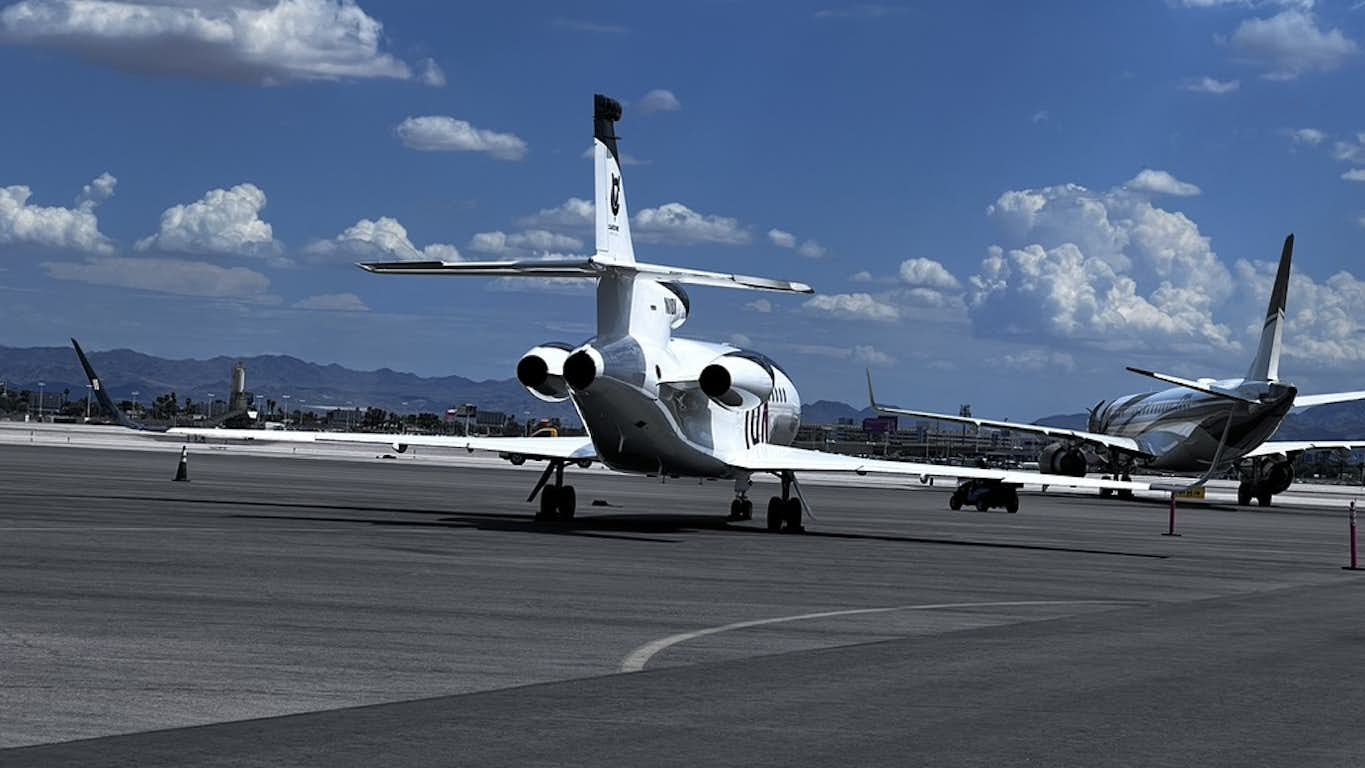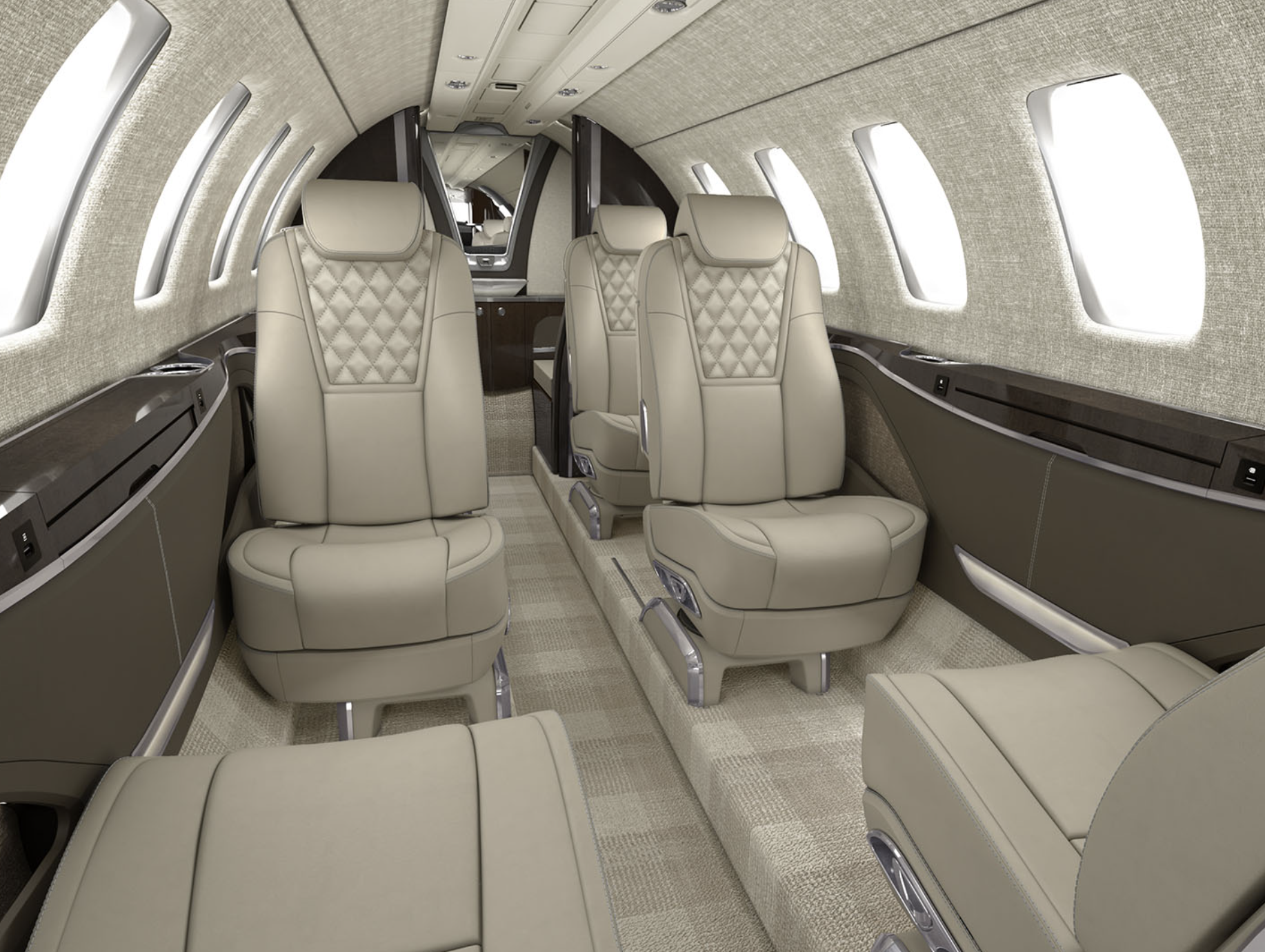
Milwaukee-based Jet Out says its model enables flights on new Citation CJ4s for under $2,000 per hour before management and acquisition costs.

Would you like to fly on a new Citation CJ4 for under $2,000 per hour? If that sounds too good to be true, Jet Out believes it has come up with a formula to drive low prices in a financially sustainable way, something that has eluded others.
The Milwaukee-based co-ownership program is the outgrowth of the corporate flight department at Phoenix Investors, LLC, a commercial real estate company.
CEO Joe Crivello, a partner at Phoenix before heading Jet Out, says that experience led to launching its fractional-like ownership program.
“We figured out a niche that worked for that business, but we needed to solve a very challenging travel logistics problem to get our employees back and forth to these properties that we were acquiring and rehabbing. Business aviation allowed that business to grow from a local, regional business to a national business that today has about 80 million square feet in its portfolio operating in 30-something states,” he says.
After spinning out the flight department in 2018, Crivello acquired Lakeshore Aviation, LLC, a Part 135 operator, and the business was renamed Jet Out.
From then until now, he says the company purposefully kept a low profile.
He says the goal was to roll out a program that initial customers would buy into with the knowledge that it would evolve.
It’s not fractional ownership but tenant-in-common co-ownership, Crivello says.
Now, he believes Jet Out has refined the formula, making the program profitable for the company yet enabling low prices.
Jet Out’s marketing push comes on the heels of Jet It’s closure last year and AeroVanti’s grounding.
The former blamed manufacturer Honda Aircraft for its problems, while the latter is facing multiple lawsuits alleging fraud.
Either way, both built their client ranks by promising flights at a fraction of what other providers were charging.
By the numbers, the cost for a 1/16th-share in a Jet Out Cessna Citation CJ4 is $881,880.
That’s in the same ballpark as other light jet programs.
However, its monthly management fee of $6,385 is about half the price.
The hourly price to fly is a fixed $840, covering maintenance. $65 for FBO, landing, and handling fees).
Fuel, a direct pass-through, is currently running $895 per hour based on an estimated 179 gallons per hour per Jet Out.
Additionally, Jet Out estimates $65 per hour in additional fees for FBOs, landing, and so forth, meaning an hourly price of $1,800.
If you fly on your own tail, you can avoid paying the 7.5% Federal Excise Tax.
If you estimate the residual value at the end of your five-year contract of 50%, based on 250 hours of flying per year, you come out at $5,231 per hour per Private Jet Card Comparisons’ exclusive QUICK COMPARE FLIGHT PRICING.
That’s all-in, and not counting any potential tax benefits.
It’s also some $3,000 less per hour than large national competitors.
There are also no daily minimums or peak days. The minimum callout is 5 pm the night before you want to fly.
Moreover, you can keep the airplane with you for several days.
If that sounds too good to be true, it comes because Jet Out does things differently.
Jet Out saves money by owning its own FBO at MKE. It has in-house maintenance. It only flies new, more reliable, efficient aircraft that are under warranty.
For customers, availability isn’t guaranteed but is on a first-come, first-served basis.
It’s also a day-based program. You get 20 days of usage per year.
Like other days-based programs, you can fly as much as you want on your days, up to the duty time limits.
That makes the program attractive to businesses that must visit multiple places in a single day.
Somebody who averages four hours of flight time across their 20 days would see their fully loaded hourly rate drop to under $4,000, again per our QUICK COMPARE FLIGHT PRICING.
Conversely, if your average usage were only 90 minutes, you would be paying around $7,500 for your occupied hours, which leads to another point of difference.
Jet Out doesn’t offer one-way pricing like most programs do.
If you are flying from Milwaukee to Dallas, you may have to pay for the repositioning back to base.
For repositioning flights, the company will offer to buy back that empty leg. The price varies based on the probability it can resell it.
For example, if you want to fly to Dallas in the evening there is a lower chance to sell a late evening flight back to Milwaukee versus if you had left in the morning.
The rush to get airplanes back to their base is part of the model that makes Jet Out different.
Chief Operating Officer Matt Wild says, “Those floating fleets, they’re essentially paying for two beds for all their pilots all the time. They’re giving a salary that pays pilots’ mortgage at home, and they’re paying for the Hilton Garden Inn at every airport in the country.”
He adds, “The guaranteed fleet access is the biggest Achilles heel to a lot of those providers.”
By making the program as-available, it doesn’t have to go off-fleet, a key differentiator from Jet It.
“We don’t see how you can do guaranteed fleet access but yet also do a low hourly cost. You don’t have to have a master’s degree in accounting to figure out that if you’re collecting $2,000 an hour, but you’re paying some other operator $8,000 or $6,000 an hour to fly your customers around, that you’re eventually going to run out of money,” he says.
Crivello notes, “We have zero off-fleet expense.”
Because of the structure, if owners are flying in their own tail, they don’t pay the FET.
Executives say that some owners will move their trips to do so.
The empty leg buyback encourages owners to send the airplane back to base, and there can even be half-day options.
Crivello says, “Let’s say we have a Wisconsin-based co-owner that is going to Florida, and there’s another co-owner that is currently visiting Florida that needs to return to Wisconsin. If they share the legs, then we’re only going to debit a half day from both co-owners.”
He adds, “That happens all the time. You’d be shocked by how often we’re able to connect co-owners in that way. It probably sounds improbable to you as an outsider to our program, but the reason that we’re so efficient at connecting the co-owners is because we are a local-national model.”
However, when you do take the empty-leg buyback, you lose the chance to cancel or change your plans.
Currently, the company is selling in a radius of Milwaukee that covers northern Illinois, Wisconsin north to Green Bay, and Michigan’s western coast.
A Waukesha County base is coming soon, as is one on Florida’s west coast.
Crivello says the regions “are very localized in terms of the base of clients that we’re serving. A lot of the clients know each other, the clients want to get to know each other, they want to socialize, they want to meet people that are in the program that have vacation houses in the same area of the United States. It’s amazing. They self-organize their travel itineraries in a way that is extremely efficient within our program.
He continues, “Everything that we have done in this program has been intended to financially incentivize cooperation between our clients.”
What’s next?
Currently, there are three CJ4s, with four more expected to come in 2024.
It has an order with Textron for further CJ4s.
There are also three Daher TBM 900s.
Members can downgrade trading a full day for a half day.
The props are in the process of being replaced by Citation M2s.
Crivello says so far, the as-available model has not been an obstacle.
He says, “It is so rare that when we have a schedule conflict, it is escalated to our senior management team.”
The executives say it has been over a month since a client’s last availability issue.
READ: Jet It Lessons: What happens when your private jet provider fails?